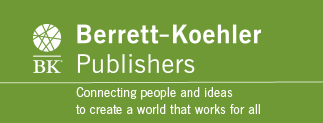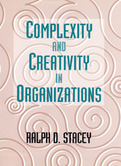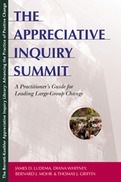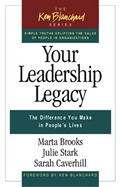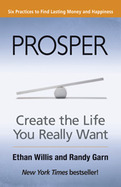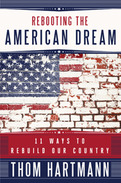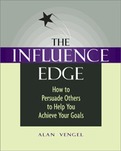Today's business environment is characterized by faster technology development and information flow, increasing interconnectedness between organizations, and the much greater diversity between people that this brings. These changes make it increasingly difficult for us foresee the consequences of our actions and stay "in control." Traditional organization theory, however, mandates that we design organizations and predict outcomes, conditioning us to assume that there is no alternative. According to this framework, we simply must foresee and stay in control, for without this there can be no order, only anarchy.
Complexity and Creativity in Organizations explains why managers in organizations cannot use projected future outcomes in action planning because future outcomes are radically unpredictable. Ralph Stacey shows how creative futures emerge from spontaneously self-organizing processes of complex learning. Complexity and Creativity in Organizations is the most comprehensive and thorough treatment of how the study and management of organizations need to change to be in tune with what we are learning from the new science of complexity. In it Stacey presents an entirely new framework for understanding life in organizations.
Combining insights from the new science with insights from psychoanalysis, Stacey posits that repressing the anxiety caused by the unstable, ever-changing nature of today's business world also represses the creative impulses-the "spaces for novelty"-that allow members of a work force to produce their best work. Organizations are creative, he says, when they operate on the edge of chaos. Thus, we should not ask how we can control the future, but rather how we can make sense of our own real, personal experience of life in organizations.
In Complexity and Creativity in Organizations , Stacey details this theory, and offers a new framework for organizations to follow. Using the science of complexity as a starting point, he pulls together many insights into behavior and organizational functioning that currently lie at the fringes of research and practice. This book invites people to explore what the new science might mean for understanding life in organizations, and shows how it can be used as a framework for understanding the processes that produce emergence rather than intentional strategies. Stacey presents an entirely new perspective on what it means for an organization to learn.
- From a pioneer in the application of the new science for understanding life in organizations
- Demonstrates what leadership means in an environment where control is impossible
- Provides a rigorous model of the learning organization that takes into account the real-life anxieties involved
- Provides a comprehensive practitioner's guide to the AI Summit methodology-a radically new way of managing change that combines large-group processes with Appreciative Inquiry
- Numerous examples from organizations around the world, including McDonald's, John Deere, Verizon, British Airways, the US Navy, United Religions Initiative, American Red Cross, and many others
- Written by four leading pioneers in the field of Appreciative Inquiry
Through an insightful parable, Your Leadership Legacy shows how to create a positive, empowering legacy that will endure and inspire. You'll learn that, as a leader, the legacy you live is the legacy you leave. Three Leadership Imperatives—dare to be a person, not a position; dare to connect; and dare to drive the dream—will guide you in creating a positive and lasting legacy.
Whatever your position, if you influence change in the lives of those around you, you and engaged in an act of leadership. And if you are a leader in any sense, you are creating a legacy as you live your daily life. Your leadership legacy is the sum total of the difference you make in people's lives, directly and indirectly, formally and informally. Will you consciously craft your legacy or simply leave it up to chance? What can you do to create a positive, empowering legacy that will endure and inspire?
Through an insightful parable, Your Leadership Legacy shows how to create a positive, empowering legacy that will endure and inspire. Doug Roman is a brash, thirty-something CEO heir apparent who assumes he will just waltz into the job after the death of the former CEO, his beloved Aunt Nan. But he must first embark on a journey to learn the three le adership imperatives that will prepare him to shape his leadership legacy. Your Leadership Legacy shows that leaving a lasting legacy is about more than just professing values -- you must demonstrate them by the way you live.
2011
Outlines six Prosperity Practices and provides concrete actions you can take to put each into practice
- New York Times Bestseller
- By the coauthor of the #1 New York Times bestseller The One Minute Entrepreneur
- Shows how to achieve genuine, satisfying, sustainable prosperity, not simply increase your income
- Outlines six Prosperity Practices and provides concrete actions you can take to put each into practice
What is true prosperity? Is it simply having enough money? Certainly financial security is necessary for peace of mind. But for many people the pursuit of money stresses and exhausts them so much, it makes peace of mind impossible. And they're always chasing after more-they never feel like they have enough.
True prosperity is when there is no conflict between money and happiness-when you don't have to drag yourself out of bed every morning because the way you make a living is true to who you are. And when your way of life is sustainable, you don't fall victim to the boom/crash syndrome that afflicts so many people because you know exactly what you need to be happy and have a plan to achieve it.
For the past twelve years Ethan Willis and Randy Garn have helped tens of thousands of people find their own personal path to prosperity. After nearly 11 million hours of personal coaching observation in eighty countries, they've developed six Prosperity Practices that will enable you to create a life that is rich, rewarding, and renewing.
You begin by focusing on what you have, not on what you do not-you'll be sur- prised what you find once you shift your way of thinking. A key part of this process is determining what Willis and Garn call your "Polaris Point": a precise description of the life you want and what you need to sustain it. This becomes your own private North Star, guiding all your actions and keeping you from chasing after things you don't really want or need. Then you'll discover how to leverage your passions, experi- ence, and expertise to generate the income you require to reach your Polaris Point.
Although you'll find much to reflect on here, Prosper is an action guide-at the end of each chapter, Willis and Garn provide concrete steps you can take to make each of the Prosperity Practices a reality. Soon your life will be aligned with the core of your being, you will have a deep understanding of what you need to be happy, and you'll know how to hold to that vision-and you will truly prosper.
-
By Americas #1 progressive radio talk show host
-
Draws on American history to offer proven solutions to America's current problems
-
Controversial, impassioned, insightful, iconoclastic -- typical Thom Hartmann
If something is wrong with your computer you reboot -- start over. That is what Thom Hartmann is advocating to restore an America beset by problems like joblessness, declining wages, huge disparities in wealth, corruption, environmental degradation, and corporate domination. The answers can be found by going back to the operating system designed by our Founding Fathers and refined by both Democrats and Republicans -- until a virus called Reaganomics began to damage it, and subsequent attacks under both Bushes and even Clinton weakened it even further.
Almost every initiative Hartmann is advocating here is rooted in America's past -- ideas that worked, and worked well, for decades. Hartmann demolishes the specious arguments so-called conservatives have used to undermine these ideas and details the disastrous results of their "reforms."
For example, until the 1980s America had a tariff-based trade policy, and American industry was healthy and American wages strong - what has been the result since we replaced this policy with "free trade"? America curbed corporate power since the earliest days of the republic -- why are we now refusing to enforce the Sherman Anti-Trust Act and allowing corporations unfettered access to the political process, something Theodore Roosevelt fought against? Medicare is popular and efficient - why not make it available to everybody, particularly since, as Hartmann reveals, it was designed to be easily scaled up? Not only do tax cuts like those championed by Reagan and Bush help only the wealthy, but the record proves higher tax rates actually drive wages up -- so why not roll back those tax breaks for billionaires and lose our knee-jerk aversion to tax increase?
On issue after issue Hartmann argues that the way forward is to look back, to tap into the wisdom residing in two and a half centuries of American history. Some of his conclusions will be controversial, such as his calls to crack down on illegal immigration and to reinstate the draft. But the litmus test for each is not political correctness but whether or not it serves to strengthen this country we all love and make life better for her citizens.
2001
The ability to influence people isn't something you're born with, it's a skill anyone can acquire. In his new book, The Influence Edge, experienced organizational consultant Alan Vengel teaches the influence skills needed to enlist the cooperation of others, inside and outside the organization, to achieve your professional goals.
Drawing on case studies and illustrative anecdotes from his consulting practice, Vengel introduces a powerful system of influence initiatives and strategic thinking that anyone can apply to almost any work situation. The Influence Edge details specific influence tactics that can lead to workplace success. It provides a nuts and bolts guide for planning for a real influence situation, and shows exactly how to map out a strategy. And The Influence Edge goes deeper into the influence realm to show how to build better long-term rapport, even with really difficult people.
An interactive self-study guide, The Influence Edge offers immediate hands-on applications. Its heavily tested, practical insights are embodied in a variety of exercises that help readers evaluate their progress, reflect deeply on what they've read, and build a personal strategy for increasing their influence edge.
Vengel equips readers to influence without authority, sell ideas, and build relationships. The Influence Edge is designed to be used again and again. It provides a complete toolkit for turning the often disorderly and seemingly impossible task of getting someone else to help you achieve your goal into an entirely viable process of analysis, preparation, and action.
